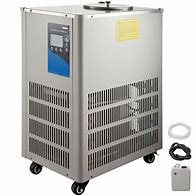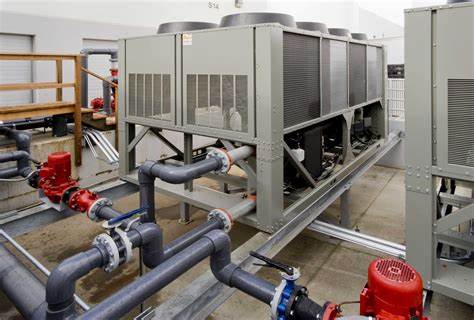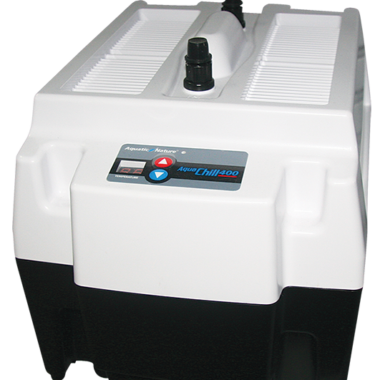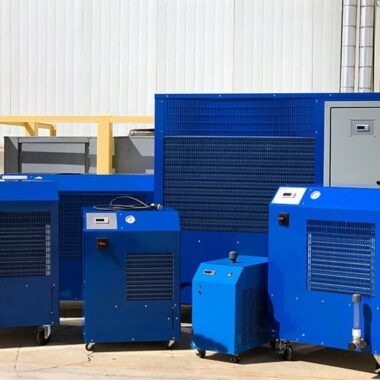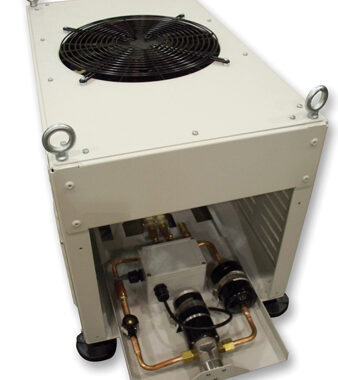Maintenance and Troubleshooting of Industrial Chillers
Maintenance and Troubleshooting of Industrial Chillers
Proper support and opportune investigating are fundamental for guaranteeing the productive and solid operation of industrial chillers. Here’s a comprehensive direct to maintenance and troubleshooting of industrial chillers:
Regular Maintenance
1. Routine Inspections
Visual Checks: Frequently assess the chiller for any visible signs of wear, erosion, or damage.
Spill Location: Check for refrigerant spills and guarantee all associations are secure.
2. Cleaning and Servicing
Heat Exchangers: Clean evaporator and condenser coils to preserve ideal heat transfer effectiveness.
Filters: Supplant or clean air and water channels to guarantee appropriate airflow and water flow.
3. Refrigerant Management
Level Checks: Screen refrigerant levels and top up if vital to preserve optimal execution.
Quality Check: Guarantee the refrigerant is clean and free of contaminants.
4. Lubrication
Moving Parts: Frequently lubricate moving parts such as orientation and engines to decrease friction and wear.
5. Electrical Components
Associations: Inspect electrical associations and terminals for snugness and signs of corrosion.
Control Boards: Check control boards for mistake codes and guarantee all sensors and controls are functioning accurately.
6. Water Treatment
Water Quality: Maintain legitimate water quality within the cooling tower to avoid scaling, corrosion, and natural development.
Chemical Treatment: Utilize suitable chemical treatments to oversee water quality.
Troubleshooting Common Issues
1. Insufficient Cooling
Possible Causes :
- Low refrigerant levels.
- Dirty evaporator or condenser coils.
- Faulty indoor regulators or sensors.
Solutions:
- Check and recharge refrigerant levels.
- Clean coils and replace filters.
- Calibrate or supplant thermostats and sensors.
2. Tall Release Pressure
Conceivable Causes:
- Dirty condenser coils.
- Insufficient water stream in water-cooled systems.
- Cheated refrigerant.
Solutions:
- Clean condenser coils.
- Guarantee proper water flow and check for blockages.
- Alter refrigerant charge to recommended levels.
3. Low Suction Pressure
Possible Causes:
- Low refrigerant charge.
- Blocked filters or strainers.
- Extension valve issues.
Solutions:
- Recharge refrigerant.
- Clean or replace channels and strainers.
- Review and adjust the development valve.
4. Compressor Issues
Conceivable Causes:
- Electrical issues such as flawed wiring or transfers.
- Mechanical disappointments like worn heading or harmed components.
Arrangements:
- Assess electrical components and repair or supplant as required.
- Perform a mechanical inspection and repair or supplant faulty parts.
5. Water Flow Issues
Possible Causes:
- Pump disappointment or inefficiency.
- Blockages in channels or heat exchangers.
Solutions:
- Check and repair or supplant the pump.
- Inspect and clear any blockages within the system.
6. Unusual Noises
Possible Causes:
- Loose components or mounts.
- Bearing wear or disappointment.
Solutions:
- Fix free parts and secure mounts.
- Inspect and replace worn orientation.
Best Practices for Maintenance
1. Planned Maintenance
Create and follow to a standard support plan based on the manufacturer’s proposals and operational requirements.
2. Record Keeping
Maintain detailed records of all support exercises, assessments, and repairs. This makes a difference in tracking execution and identifying repeating issues.
3. Training
Guarantee support personnel are legitimately prepared and learned about the particular chiller models and systems in utilize.
4. Use of OEM Parts
Utilize original equipment manufacturer (OEM) parts for substitutions to guarantee compatibility and reliability.
5. Prescient Support
Actualize prescient maintenance procedures utilizing IoT and sensor advances to screen chiller execution and predict potential disappointments some time recently they happen.
Conclusion
Viable support and investigating of industrial chillers are basic for guaranteeing their life span, proficiency, and unwavering quality. By following standard upkeep plans, promptly tending to issues, and utilizing advanced checking advances, you’ll minimize downtime and operational costs whereas maximizing the execution of your chiller systems
